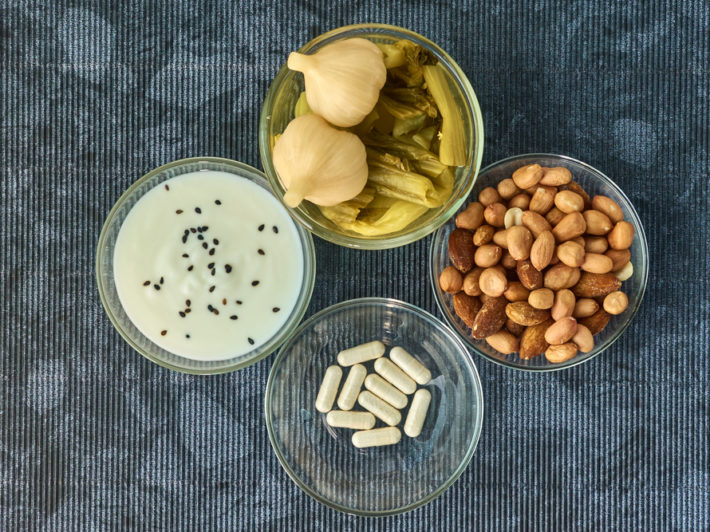
by Lewis Chang, PhD
Series Part 1: An Overview on Prebiotics
This multi-part series will help you understand what prebiotics are, what they do, and how they may improve the health of your patients. Based on published scientific literature, this series will also clarify common misconceptions surrounding prebiotics and summarize clinical evidence of specific ingredients with prebiotic properties.
Introduction: I think I know what prebiotics are, but…
Many health-conscious consumers have become familiar with the term “prebiotics.” Yet, conflicting information found on the internet likely has caused a lot of confusion about what they are and what they do. In a recent scientific survey of 200 U.S. adult patients at two urban medical centers, researchers found that 38% of those patients were consuming some forms of prebiotics but only 7% of them could correctly define the meaning of prebiotics from a list of answers.1
In a similar scientific survey of 256 healthcare providers including 100 physicians, researchers found that only 28% of them were familiar with prebiotics. Despite believing that prebiotics were beneficial to overall health, the majority of them had never recommended prebiotics to patients.2
Nevertheless, these healthcare providers indicated that, if substantiated by peer-reviewed literature, they would be very much willing to recommend prebiotics to patients. Catch-22: 76% of the surveyed healthcare providers did not read current research on prebiotics.2
Definition of prebiotics
The definition of prebiotics has been revised several times in the past 20 years. The most current definition was described in 2010 by the International Scientific Association for Probiotics and Prebiotics (ISAPP) as a selectively fermented ingredient that results in specific changes in the composition and/or activity of the gastrointestinal microbiota, thus conferring benefit(s) upon host health.3 (The word “microbiota” above means the trillions of microorganisms such as bacteria and fungi that reside in the gut of humans.)
Simply put, prebiotics are nondigestible substances that function as food for the gut microbiota and they fuel growth or activity of health-promoting bacteria that live in the gut.
As microbiome analysis becomes more sophisticated and researchers are learning more about prebiotics, the 2010 definition of prebiotics will continue to evolve and be revised on a regular basis in the scientific communities. In 2015,a broader definition has been proposed: a prebiotic is a nondigestible compound that, through its metabolization by microorganisms in the gut, modulates composition and/or activity of the gut microbiota, thus conferring a beneficial physiological effect on the host.4
Examples of prebiotics
Classic prebiotics that have been identified early on include:3
- inulin
- fructo-oligosaccharides (FOS)
- oligofructose (OF)
- transgalacto-oligosaccharides (tGOS), also spelled as galacto-oligosaccharides (GOS)
- lactulose
Recent research has identified new compounds that contain prebiotic effect as well. They include (but not limited to):3
- isomalto-oligosaccharides (IMO)
- polydextrose
- soybean oligosaccharides
- lactosucrose
- glucans, or glucooligosaccharides (GlOS)
- xylooligosaccharides (XOS)
There are ingredients that contain prebiotic effect, but they also have other important biological functions that go beyond gut microbiota modulation. Thus, categorizing them as only prebiotics actually downplays their value. A great example is the human milk oligosaccharides (HMOs).
Mechanisms of prebiotics
Prebiotics confer health benefits via various mechanisms of actions:5,6
- Modulation of the gut microbiota composition, such as the stimulation of beneficial Bifidobacterium and lactobacilli. They help restore a diverse gut microbiota which is important for host health.
- Production of short-chain fatty acids (SCFAs), such as butyrate, proprionate and acetate. SCFAs are an energy source, have immunological and metabolic effects, and reduce intestinal pH which inhibits the growth of pathogenic bacteria.
- Anti-adhesive function. Some prebiotics prevent adhesion of pathogenic microbes to intestinal linings by mimicking the binding sites of those microbes.
Later in this series we will dive into more details. We will discuss the scientific evidence of specific prebiotic ingredients and their health benefits. We will also discuss specific questions and concepts that many help consumers and healthcare providers gain clearer understandings of prebiotics and make informed decisions.
References
- Betz M, Uzueta A, Rasmussen H, Gregoire M, Vanderwall C, Witowich G. Knowledge, use and perceptions of probiotics and prebiotics in hospitalised patients. Nutrition & Dietetics. 2015;72(3):261-266.
- Oliver L, Rasmussen H, Gregoire MB, Chen Y. Health Care Provider’s Knowledge, Perceptions, and Use of Probiotics and Prebiotics. Topics in Clinical Nutrition. 2014;29(2):139-149.
- Gibson GR, Scott, K.P., Rastall, R.A., Touhy, K.M., Hotchkiss, A., Dubert-Ferrandon, A., Gareau,M., Murphy,E.F., Saulnier, D., Loh, G., Macfarlane, S., Delzenne, N., Ringel, Y., Kozianowski, G., Dickman, R., Lenoir-Wijnkoop, I., Walker, C., Buddington,R. Dietary prebiotics: Current status and new definition. Journal of Food Science and Technology Bulletin: Functional Foods. 2010;7:1-19.
- Bindels LB, Delzenne NM, Cani PD, Walter J. Towards a more comprehensive concept for prebiotics. Nature reviews. Gastroenterology & hepatology. 2015;12(5):303-310.
- Valcheva R, Dieleman LA. Prebiotics: Definition and protective mechanisms. Best Pract Res Clin Gastroenterol. 2016;30(1):27-37.
- Slavin J. Fiber and prebiotics: mechanisms and health benefits. Nutrients. 2013;5(4):1417-1435.





